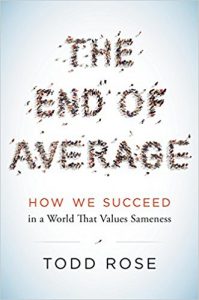Personalized
Learning: Opportunities and Pitfalls
“Know thyself!” is one of the most famous quotes in human history. However the principle behind Socrates’ sage teaching applies not just to the individual, but to the organization, system, or field as a whole. It is imperative that we approach each promising opportunity with a clear-eyed knowledge of our field’s past, present and future. This will allow us to maximize potentially positive outcomes and avoid mistakes that can undermine innovations that, with clearer foresight, might have come much closer to being the panacea we had all hoped it to be - before it assumed its place alongside myriad other well-intentioned and highly defensible efforts.
Nothing excites me more than the idea of innovation in education; we are a field in need of leaps forward in how we view, execute, and measure our work. Of the innovations earning the most deserved praise is the concept of personalized learning, an approach that seems so obviously logical on its surface that it seems shocking to a reflective practitioner that it has not already entrenched itself into the schema of our field. It is clearly logical to assume that if we wish to help students understand learning outcomes, we should accept that the pathways to that outcome may look markedly different for each child.
And, to be blunt, it is logical. And ethical. So what is the issue?
As usual, there is not a simple answer to that question, but it is up to us to find the answers. I would assert that we have a system built for the collective whole, including measurement systems that value, rate, and compare against an “average” expected performance for a student of a given age. Even in a standards driven curriculum, the foundations of what a student “should” know or be able to do at a given age are based on implied averaging against a group norm. Although these methods, particularly when it comes to large-scale assessment, serve the collective purpose well, it pays little attention to the individual. The individual is sometimes sacrificed because, well, it works for many others. This is in deep contrast to the concept behind personalized learning, which asks educators to allow for individuality in path and pace. So, an obvious challenge exists: how do we embed something that can be at odds with pieces of the system in which it lives?
Although I do not have a prescription to serve as the unifying solution, I would encourage us to learn from prior experiences and not simply put it on the teacher through the “leader develops awareness of a solution > leader connects to a vendor peddling solutions to district, or leader directs staff to implement said innovation > district expects sites and teachers to make the dream a reality. Much like the earlier stages of differentiation models which, in theory, solved many issues of individual learners yet was often found too cumbersome and difficult to implement at a rate of high scale, personalized learning is logical, intuitive outside of education, and yes, aligns even with the neuroscience of learning.
That makes it obvious, but it does not make it easy.
As leaders, I would encourage us to recognize the significant potential of personalized learning, particularly in light of emerging technologies that can support implementation and lift some of the burden from the teacher. However, we must be cautious that we do not chase the “next thing” to a point where we do not see hindrances or challenges that may doom a worthy pursuit. We must scrutinize our own systems, be healthy skeptics about packaged “solutions,” empower practitioners to help design implementation models, and constantly ask ourselves how we can help clear obstacles at either a local, state, or federal level.
I am bullish on this moment in time and the opportunities related to personalized learning that await. After all, nothing empowers learners to know themselves more than a personalized learning plan. Socrates may never have actually said it, but I think he would agree that the only thing better than an individual knowing thyself, is when others have the same window into their own minds. Let’s seize this opportunity with clear eyes, informed by our own experiences as a field, and shoulder-to-shoulder with each other, as we interrogate a system that possesses inherent barriers to the success of personalized learning. We stand to play a pivotal role in making personalized learning for all a reality.


 The beginning of the school year is upon us and I see you, hardworking educators. I see you planning lessons and preparing your classroom for new learners. You are collecting supplies, organizing textbooks, and thinking through the best way to get to know your students.
The beginning of the school year is upon us and I see you, hardworking educators. I see you planning lessons and preparing your classroom for new learners. You are collecting supplies, organizing textbooks, and thinking through the best way to get to know your students.